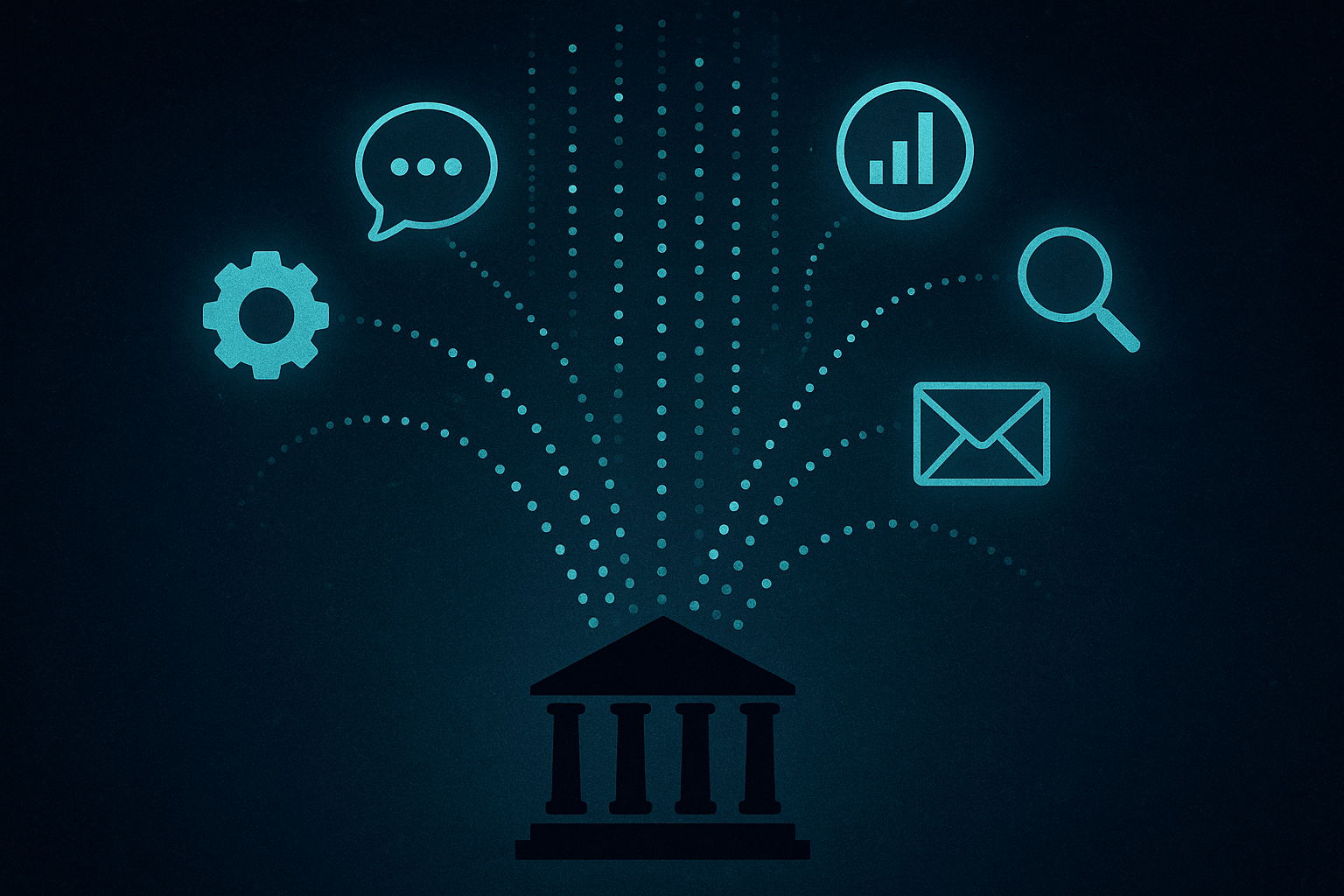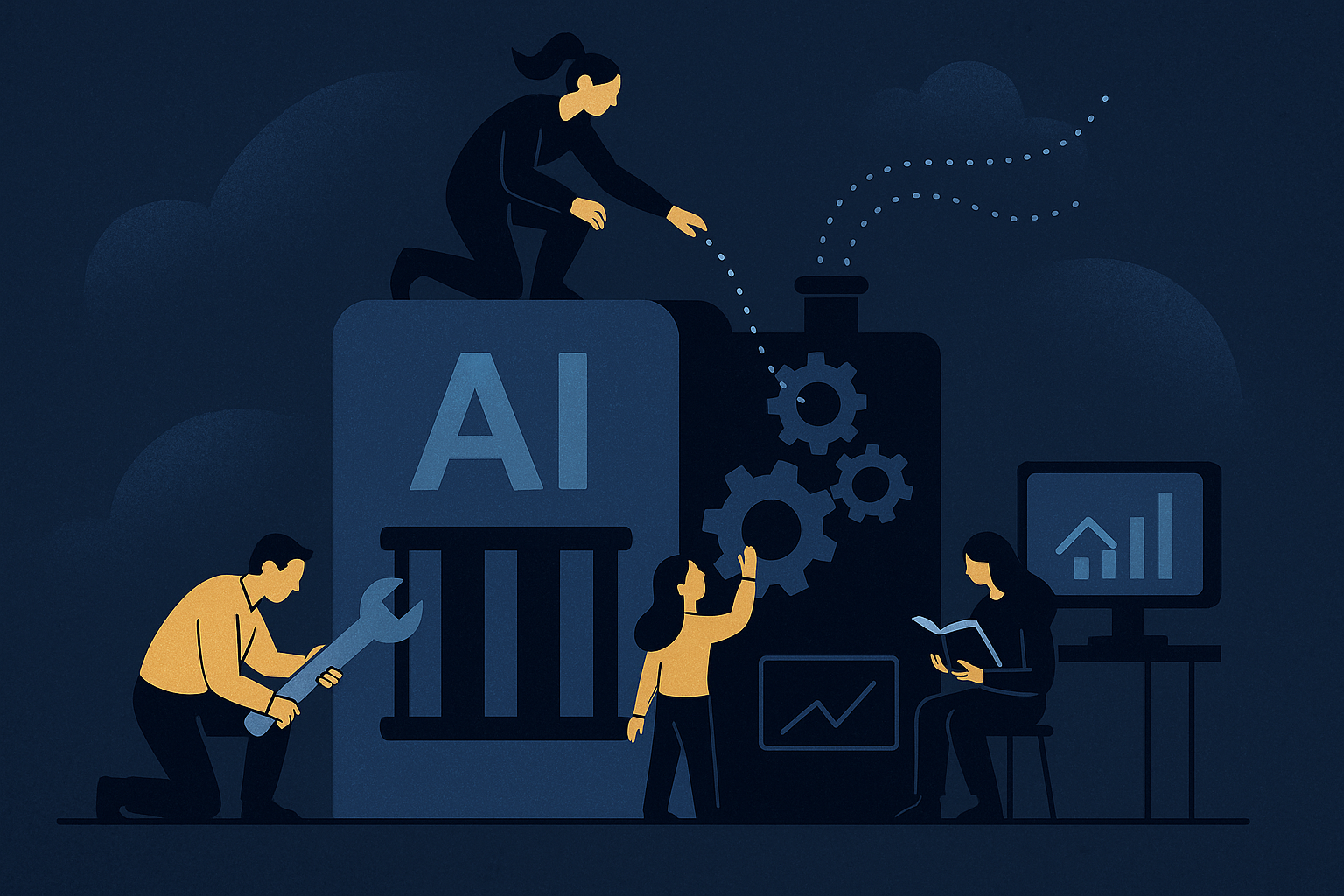How AI solutions in GovTech are transforming public services around the world
Generative AI is steadily gaining ground in public administration. Just two years ago, it was discussed as a future possibility — today, it's a working tool that changes how citizens interact with governments and how public servants engage with data, colleagues, and decisions.
From experiments to productivity
According to Deloitte, generative AI could add up to $1.75 trillion in annual productivity to the public sector by 2033. But the specifics are more compelling than the forecasts:
In Portugal, the accuracy of a virtual assistant's responses increased from 40% to 90% within two weeks of launch.
In Kelowna, Canada, automated processes have significantly reduced the time it takes to review permit applications.
In Tokyo, a chatbot is already being used to generate internal texts, prepare ideas, and analyze requests.
Typical use cases for AI in governments
📌 Handling citizen inquiries. Chatbots operate 24/7, answering repetitive questions and routing complex ones to the appropriate departments, easing the load on contact centers.
📌 Automating routine tasks. Document drafting, report generation, form validation, data extraction from PDFs — all take less time for public servants.
📌 Improving communication. Copilots assist in writing explanations, letters, and guides for citizens. They act as editors and draft generators.
📌 Analytics and decision-making. AI identifies patterns in large datasets, highlights problem areas, and supports fact-based policy development.
📌 Internal search. Internal bots respond to staff queries about regulations, internal policies, and completed projects.
📌 Programming and system modernization. Copilots help write and review code — particularly useful for governments phasing out legacy systems.

Real-world case studies 👇
🇨🇦 Kelowna
Two chatbots: one offers permit guidance, the other supports the application process.
The project was launched in collaboration with the planning department, focusing on real pain points for residents and developers.
The team developed a Responsible AI Framework and plans to launch a public AI services registry so citizens can see where and how AI is used.
🇯🇵 Tokyo
A private version of ChatGPT for public servants, based on Azure OpenAI.
Runs within the Tokyo Metropolitan Government infrastructure.
Clear usage rules: no confidential data input, responses must be verified, content must be labeled.
Over 200 use cases identified; 50,000 employees trained.
🇵🇹 Portugal
A virtual assistant for Mobile Key helps users navigate digital ID.
Training data was sourced from a vetted FAQ database reviewed by technical and communications teams.
The pilot launch was transparent about the technology’s limitations and actively sought user feedback.
Next step: scale the assistant for migrant services in 15–20 languages.
What enables effective AI adoption in government
Successful government AI projects don’t begin with the technology — they begin with a clear problem to solve. The strongest cases aren’t about “AI for innovation’s sake,” but “we have a bottleneck, and here’s how we can relieve it.” In Kelowna, it was building permits. In Portugal, queues and confusion around digital ID services.
Another key factor: constant involvement of the end users. In all three examples, public servants weren't just “informed” about the new system — they were engaged in its development, testing, and adaptation. The tools weren’t built for them, but with them.
Training also plays a major role — not in the form of long lectures or certificates, but hands-on support, peer-to-peer learning, and short sessions. Tokyo even introduced internal prompt engineers to help others craft effective AI queries.
A shared trait: strong internal security policies. Sensitive data is not sent to open systems; instead, it’s processed on government infrastructure. From Kelowna to Tokyo, each case includes custom guides, procedures, and rules — often developed with external experts.
And it’s all transparent. Successful public AI projects publish guides, explain their principles, and show exactly where and how AI is being used. Transparency isn’t a formality — it’s part of the trust infrastructure.

What’s next
First, services will become functional, not just informative. Chatbots won’t just tell you what documents are needed — they’ll generate the certificate, fill out the application, or submit a request on your behalf. All after authorization, with no need to re-enter the same data.
Second, deeper AI integration into internal processes. Copilots will be embedded into every system — from internal document workflows to budget planning. Public servants are already starting to dictate tasks to AI instead of filling out forms manually.
Another goal is to make services truly inclusive. In Portugal, for instance, the virtual assistant is being prepared to operate in 15–20 languages to help migrants access public services. This is no longer just a tech upgrade — it’s social integration.
These changes won’t come with fanfare. They won’t be labeled “national reform,” but they’re happening — gradually, every day, in system backends, on website buttons, in the speed of the answers people receive.
Conclusion
The strongest examples of AI in government aren’t flashy breakthroughs. They’re clear, grounded solutions. Where there was delay — now it’s faster. Where things were confusing — now they’re simpler. All it takes is identifying the sticking point and giving a team the tools to solve it.
No big words needed. Just results. And the governments focused on that are already delivering.
At Homin, we develop innovative technologies and artificial intelligence to accelerate industries.
Contact Olha to learn more and unlock the full potential of AI for your business.

